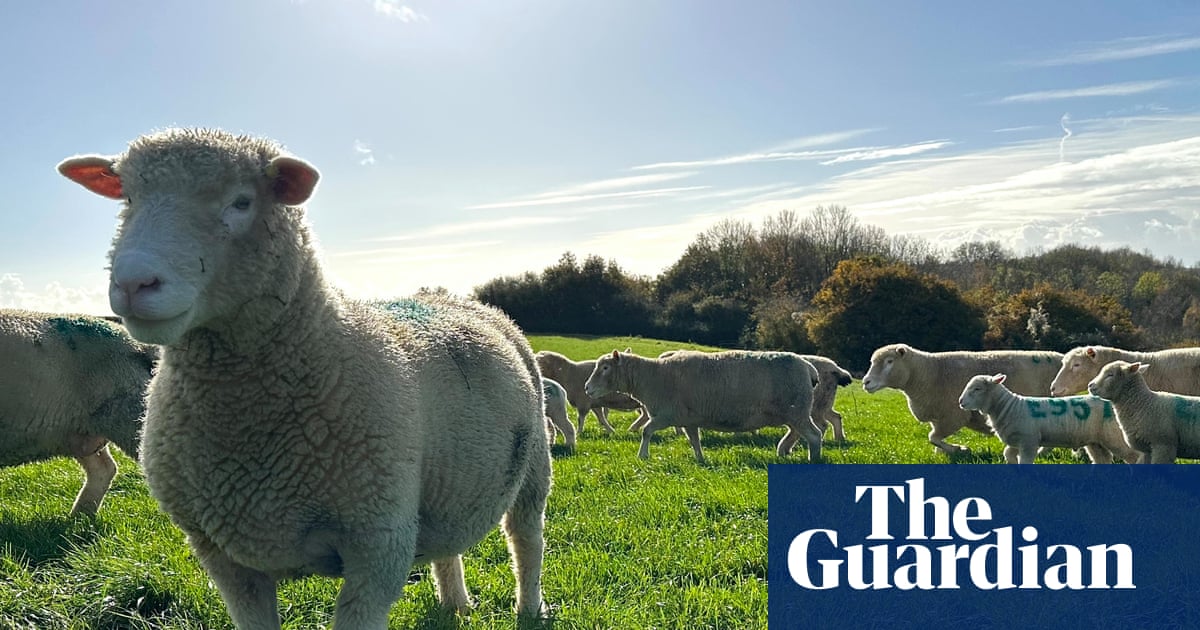
"As far back as the 17th century, sheep from west Dorset and south Somerset were renowned for their ability to lamb out of season, due to a genetic quirk which somehow arose in the region. With careful planning, healthy ewes could have three pregnancies in 24 months. They became a registered breed during the Victorian era. Local shepherds vied to name it after their own county, and Dorset won: in 1891 farmers near Bridport established the Dorset Horn Sheep Breeders' Association."
"About a third of the adults have horns that spiral downwards in front of their ears like scaly ammonites. Those without horns are Poll Dorsets, a closely related variant originally created in Australia by crossing imported Dorset Horns with other pedigrees. The Polls are easier to manage, Francis explains, they don't get hooked up on things, or bash you in the legs. But there's something about the Horns; they are very pleasing to the eye."
Autumn lambs on a sunny hilltop reflect a long regional tradition of out-of-season lambing. Sheep from west Dorset and south Somerset developed a genetic quirk enabling lambing outside spring; with careful planning, ewes could have three pregnancies in 24 months. The breed was registered in the Victorian era, and in 1891 farmers near Bridport formed the Dorset Horn Sheep Breeders' Association. The flock observed is the longest-established Dorset Horn flock, first registered in 1906 by Frederick Fooks and now managed by his great-grandson, Francis. About a third of adults have downward-spiralling horns; hornless Poll Dorsets were created in Australia and are easier to manage. Both types share white faces and rosy nostrils, and they carry thick, creamy fleeces valued for felting, with some wool sent to a Yorkshire specialist.
Read at www.theguardian.com
Unable to calculate read time
Collection
[
|
...
]